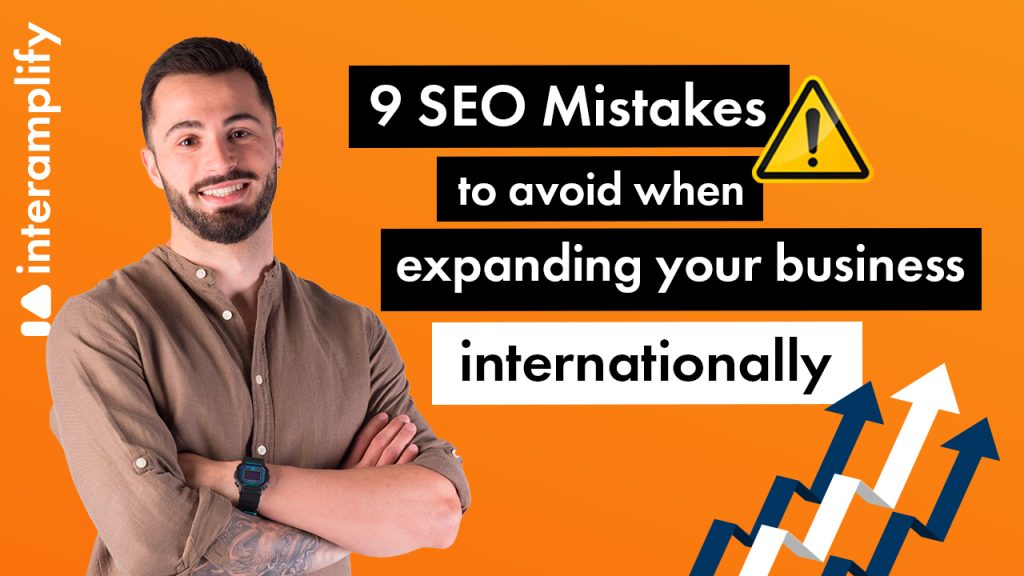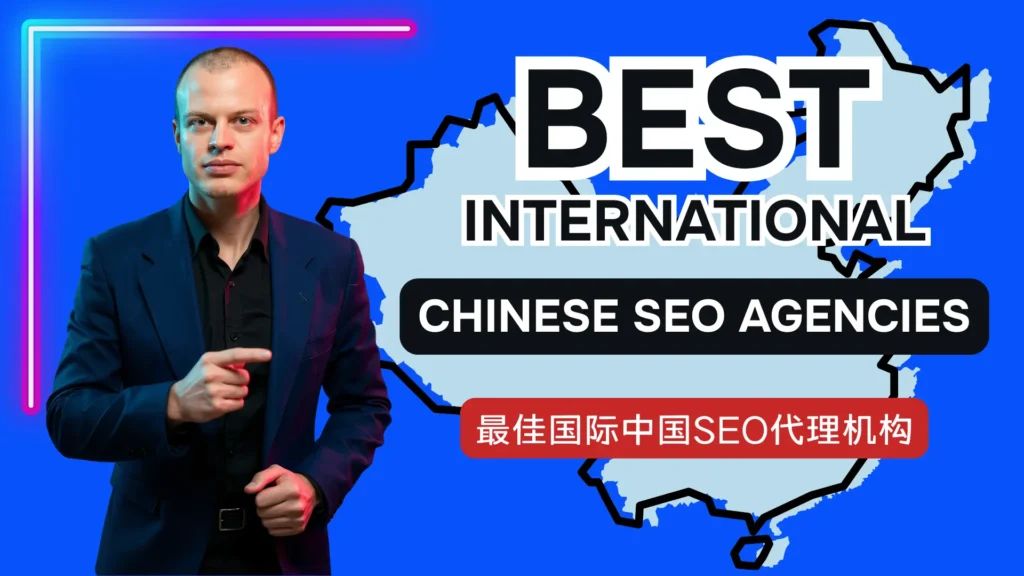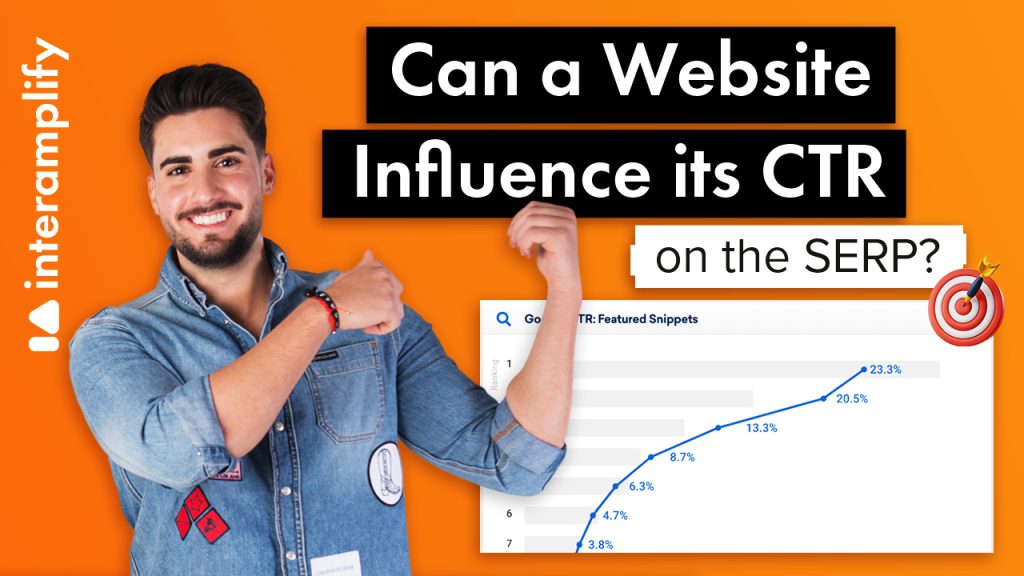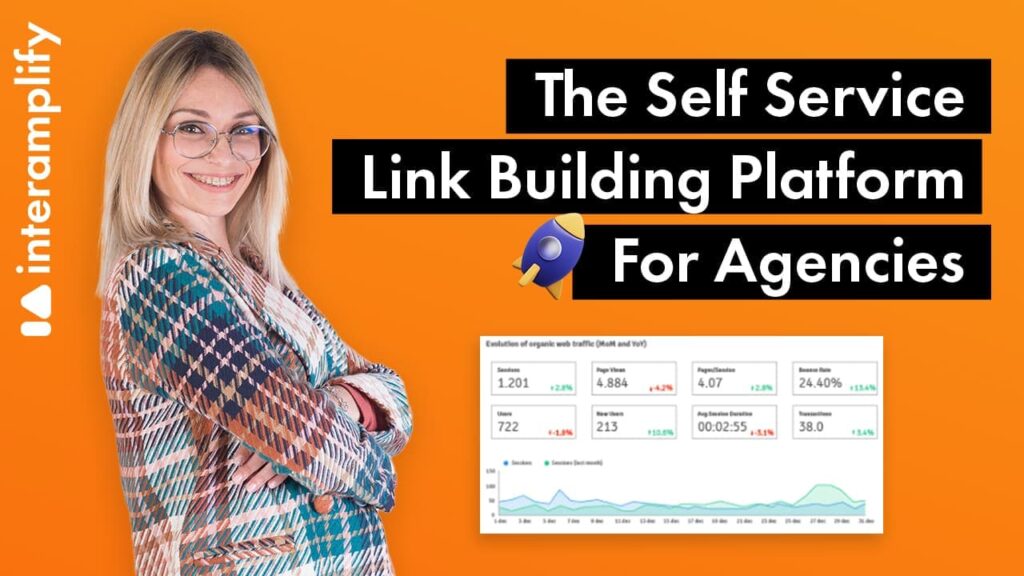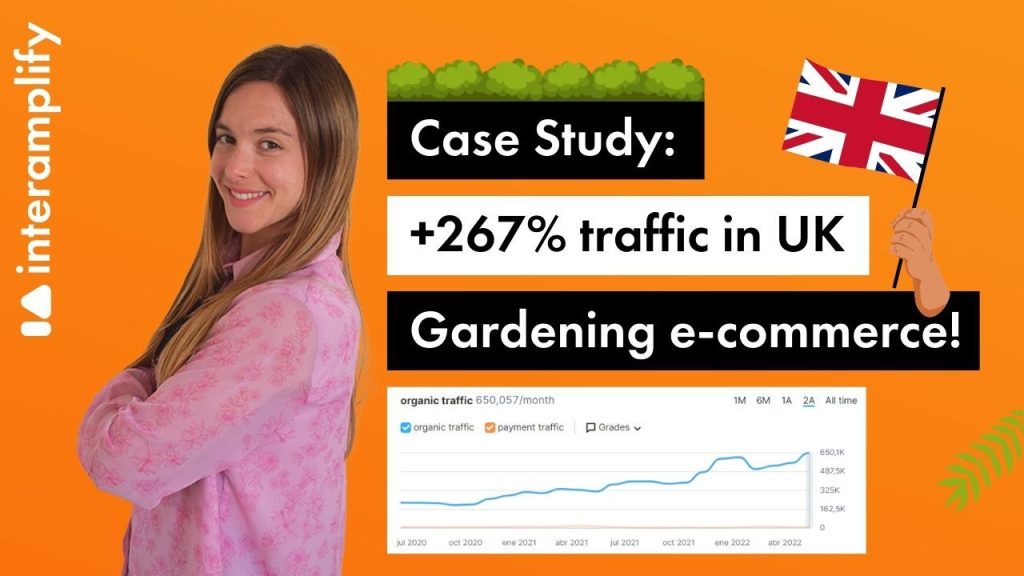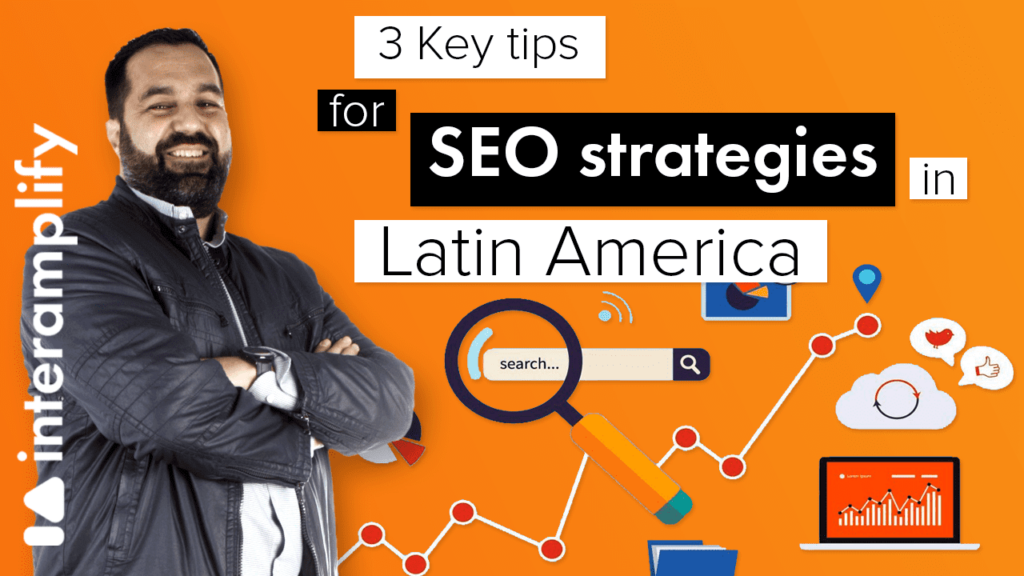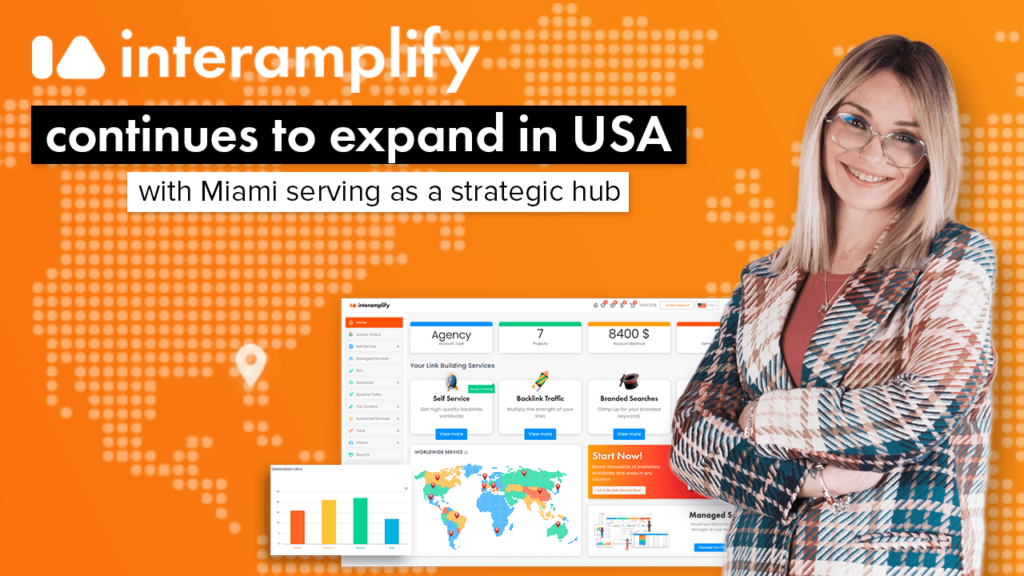Internationalizing a brand unquestionably opens up a world of new business opportunities. However, it is also true that in their attempt to attract millions of consumers, many projects can fall victim to despair and impatience, resulting in their objectives being frustrated. This occurs as a result of the incorrect planning and execution of the tasks associated with this transformation.
If your company is planning to expand into other countries, it is time to invest in International SEO. This digital marketing strategy entails optimizing your website so that it appears in search engine results for each country.
On this occasion, we will uncover the most common mistakes that we have encountered in our experience with international marketing and that 70% of companies make when performing this type of SEO.
Don’t fall into the trap, avoid making a mistake!
Taking your product beyond geographical boundaries and reaching an international audience usually requires a thorough understanding of the market you are attempting to enter: local competition and differences in consumer habits are just two of the many peculiarities you will have to consider.
Throughout our history, we have had to assist projects with international potential that have encountered numerous challenges due to a lack of experience.
Consumers, on the other hand, do not wait and are increasingly making purchases through digital channels. In this new scenario, e-commerces that want to expand their brand will be successful if they follow International SEO best practices. These are the main mistakes you can face:
1. Do not use different URLs for each version of your international website
A critical aspect of successfully internationalizing your website is that each version, whether by language or country, has its own URL. Furthermore, each URL must be unique, crawlable, indexable, and accessible to Google. In this way, we ensure that each of them is properly positioned.
If you use an automatic translation plugin, you should be aware that it displays the different language versions under the same URL in a mechanical way.
To address this, we use subdirectories or subdomains to create a unique web structure for each version of the website.
2. Inadequate website structuring
As a result, the first thing we recommend is a logical web structure based on the needs and characteristics of the business.
As previously stated, the correct approach to URL structure is to use subdomains or subdirectories for each country or language.
For this we use country code top-level domains, known as ccTLDs, or generic top-level domains, known as gTLDs.
The distinction between them is that ccTLD domains are reserved for a specific country and, by default, will rank only for that country. Because gTLD domains cover a broad spectrum, we are not limited to users in a single country. However, which one we choose will be determined by the strategy we employ.
The Coca-Cola website, which uses top-level domains for each country, is an example of ccTLD domains:

And here’s an example of how to use gTLD domains: the Zara website, which uses.com and adds subdomains /pt, /it, /de, /uk, and so on for as many countries as it is present:
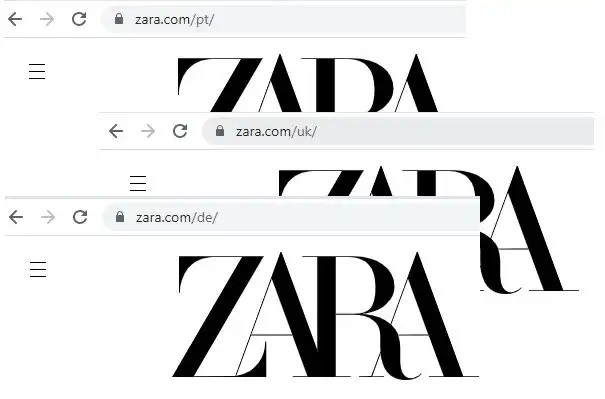
3. Using the tag in translations
One of the most common errors is using the <noindex> tag on translated pages to tell Google that this page should not be indexed and to keep Google from thinking there is duplicate content.
If Google does not index the URL, the user will not see this page in the results, and we will miss out on opportunities to rank the website in other countries or languages.
If you want to avoid content duplication, keep reading because we’ll explain how we handle it at Interamplify.
4. Do not use HREFLANG Tag
Any page translated from an original site must include the HREFLANG tag, which tells Google that the content is available in other languages. Depending on the user’s location, the search engine will display the appropriate version.
This meta tag was created to guide search engines from the code of a page to understand the location or language of a web page, so it is a very powerful and useful tool in International SEO, as it also prevents content from being considered duplicate.
5. Failure to adapt the sitemap
Websites with pages translated into multiple languages must have an adapted sitemap, as recommended by Search Console Center, in order for search engines to index them.
It is essential that each version of the page has its corresponding sitemap and depending on the CMS you use you can create sitemaps separated by languages or through plugins.
6. Doing SEO just for Google
It should be remarked that Google does not have to be the most popular search engine in all countries. Depending on the country in which we want to launch a website, we will need to consider other search engines and apply SEO rules that may differ from those used by Google.
For example, Yandex is the most popular search engine in Russia, Baidu in China, Yahoo in Japan, and Naver in South Korea. As a result, understanding the search habits of local consumers is vital for the SEO strategy to work.
7. Failure to consider local legal issues
In general, European regulations regarding what you can do or say on the Internet are much stricter than those in the United States or Latin America. This is another factor to consider when approaching your International SEO strategy, because knowing the rules of the countries you are attempting to access with your products will avoid certain headaches and even fines or penalties that you may incur due to ignorance of the above.
You should also be aware of certain legal aspects related to your activity in other countries, such as the location of your servers, laws affecting local consumer privacy, and data sharing.
And, obviously, when it comes to “content”, keep your mind focused and put all your senses to work!
Now that we’ve covered the elements related to the structure of the website and the components that can affect other levels, such as the legal aspect, it’s time to go over the most common content mistakes.
8. Translate keywords (and any content!)
Definitely, it is the biggest mistake in International SEO. Dedicate all your efforts to establish your keywords correctly. Aside from not doing a literal translation, you should not choose keywords without considering the unique characteristics of each country’s language.
You may have to choose a different word for the same language and keyword at times. Consider what happens when a fashion e-commerce company wants to lead the ranking in the United States and is deciding on how to name its pants category:
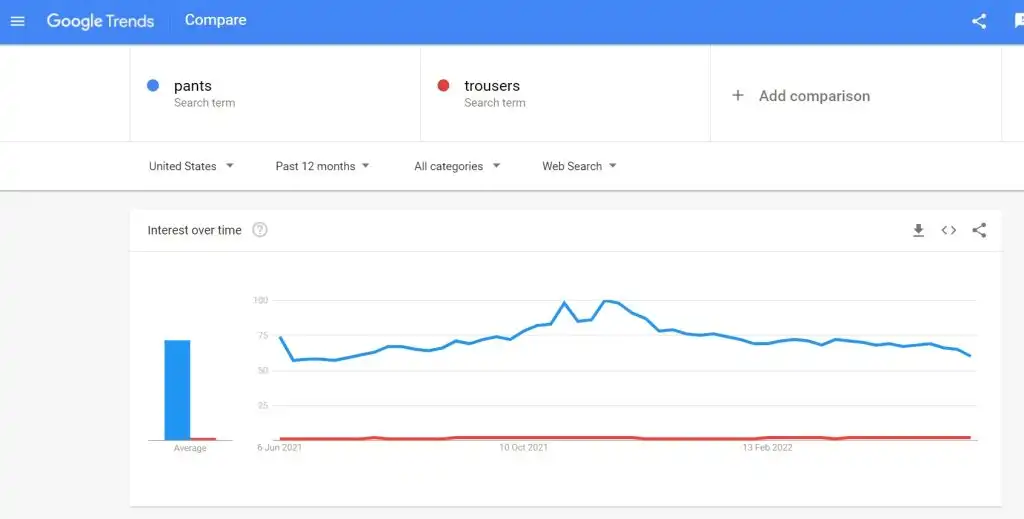
Indeed, the searches you’re looking for contain the word “pants” rather than “trousers.” But now consider what would happen if you wanted to rank for the same keyword in the United Kingdom:
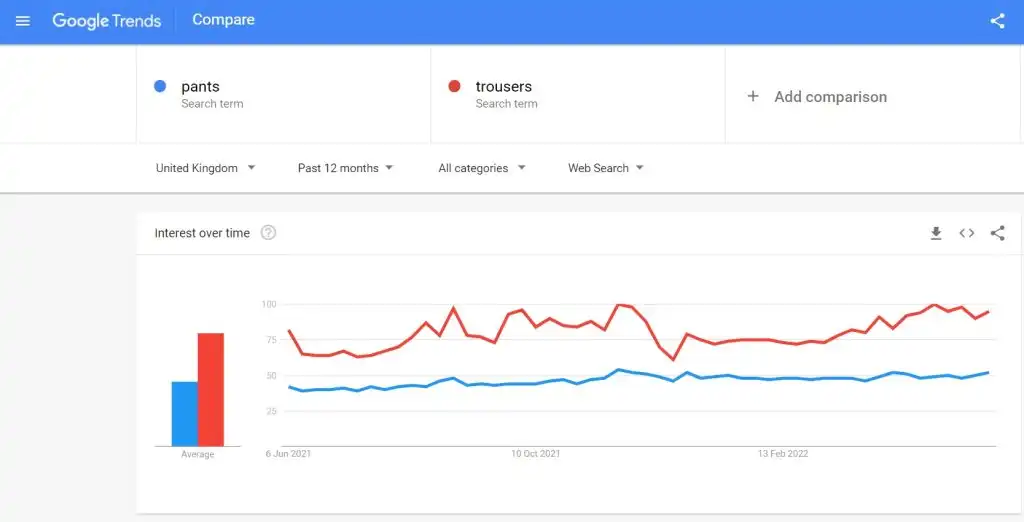
In this case, the keyword of interest is “trousers” versus “pants”.
This is why you should not consider the keyword provided by the translator to be a valid keyword, because it is possible that a word does not have an equivalent in another language and the translator offers a similar one that does not fully adapt to the audience you are attempting to attract.
We always develop a comprehensive list of keywords and conduct competitive research for each target country at Interamplify, replacing the automatic translator with an experienced, native-speaking search marketing professional.
The same is true for the rest of the website content as it is for keywords. Instead of automatically translating, it is always preferable to create content in the language, which has its own colloquial expressions and idioms that must be adapted to achieve a good ranking in foreign markets. This is only possible if you hire a native speaker.
9. Use of images with text
Reading the text of an image is something that Google robots cannot do. Much less if we consider translating it. The key is to avoid using text in images, since this will only result in more work when translating the content, as you will have to create new images with the text in different languages. It is best to use the ALT attribute to assist the search engine in identifying visual resources.
To summarize
Finally, and most importantly for us, you must be prepared to do International SEO with all available tools. Although it may appear simple, implementing an International SEO strategy has its own set of challenges, so it is best to have a team of professionals who are trained, experienced, apply an analytical perspective, are up to date on the latest developments, and can devote time and resources to the task.
The internationalization process consumes a significant amount of company resources. You will waste more time if you do not master these tasks. It is essential to understand how to focus on what your team does well and find the right professionals for the rest of the tasks because it will be more profitable and faster in the long run.

